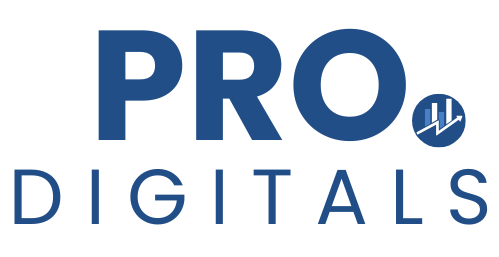Local SEO backlinks aren’t just another checkbox in your digital marketing strategy—they’re the backbone of your business’s online visibility. If you’re eager to learn local SEO, understanding the nuances of local link building is non-negotiable. But let’s be honest: the process can feel overwhelming. Where do you start? How do you avoid the pitfalls that derail even seasoned marketers?
This guide strips away the fluff and delivers actionable insights. No jargon. No empty promises. Just a roadmap to building authoritative backlinks that drive real results.
Why Local SEO Backlinks Are Your Secret Weapon
Search engines like Google thrive on trust signals. Backlinks act as digital endorsements, telling algorithms, “This business matters.” For local companies, high-quality local SEO backlinks mean:
- Higher rankings in “near me” searches
- Increased visibility on Google Maps
- Credibility in local directories and industry hubs
But here’s the catch: not all links are equal. A backlink from your city’s newspaper carries more weight than a spammy directory no one visits. Quality trumps quantity—every single time.
The Psychology Behind Backlinks
Think of backlinks as word-of-mouth referrals in the digital age. When a reputable site links to yours, it’s like a trusted friend recommending your business. Google’s algorithm rewards this social proof.
Step 1: Conduct a Ruthless Backlink Audit
Before diving into local link building, assess what you’re working with. Tools like Ahrefs, Moz, or Google Search Console reveal:
- Who’s linking to you (and whether they’re reputable)
- Toxic backlinks (yes, they exist—and they’re dangerous)
- Anchor text distribution (keyword-stuffed links raise red flags)
How to Clean Up Your Backlink Profile
- Disavow toxic links using Google’s Disavow Tool.
- Prioritize authoritative domains (e.g., local news sites, industry associations).
- Ditch spammy directories—they’re SEO kryptonite.
Pro tip: If a link looks sketchy, it probably is. Trust your gut.
Step 2: Claim and Optimize Local Listings
Local listings are low-effort, high-reward opportunities for local SEO backlinks. Start with these essentials:
- Google Business Profile (formerly Google My Business)
- Bing Places (yes, Bing still matters)
- Yelp (annoying sales tactics aside, it’s a traffic magnet)
- Industry-specific directories (e.g., Thumbtack for service businesses)
The NAP Consistency Rule
- Name
- Address
- Phone number
Inconsistencies confuse search engines. Double-check every listing.
Step 3: Become a Local Media Darling
Local journalists and bloggers crave fresh stories. Pitch them:
- Charity events your business sponsors
- Unique product launches (e.g., “Austin’s First Zero-Waste Bakery”)
- Expert insights on trending local issues
Tools to Land Media Coverage
- HARO (Help a Reporter Out): Connects you with journalists seeking sources.
- Local Facebook groups: Journalists often scout here for stories.
- Press releases: Distribute via PR Newswire or local outlets.
Even a brief mention with a link can turbocharge your local link building efforts.
Step 4: Forge Strategic Local Partnerships
Collaboration isn’t just for influencers. Partner with complementary businesses for:
- Guest blog exchanges (e.g., a florist writes for a wedding venue’s site)
- Sponsorships (local sports teams list sponsors online)
- Joint events (host a workshop and get linked on event pages)
Real-World Example
A Portland coffee roaster partnered with a bookstore for a “Books & Brews” event. Both businesses gained backlinks from local blogs and event calendars.
Step 5: Harness the Power of Reviews and Testimonials
Happy customers = free marketing. Encourage reviews on:
- Industry platforms (e.g., ZocDoc for healthcare)
Pro Move
Some businesses include a subtle backlink in the reviewer’s bio (e.g., “Owner of [Business Name] – [Website]”). It’s ethical and effective.
Step 6: Create Irresistible Local Content
Content marketing isn’t just for global brands. Locally focused content attracts organic backlinks. Try:
- “Best of [City]” lists (e.g., “Top 10 Brunch Spots in Nashville”)
- Local history deep dives (nostalgia = shareability)
- Resource guides (e.g., “How to Prepare for Monsoon Season in Phoenix”)
Why This Works
Other local sites link to your content because it’s useful. No begging required.
Step 7: Target .edu and .gov Backlinks (The Holy Grail)
.edu and .gov backlinks are rare but powerful. Secure them by:
- Sponsoring school events (check PTA websites for sponsor pages)
- Partnering with local government programs (e.g., sustainability initiatives)
- Offering free workshops (libraries often link to partners)
The Reality Check
These links take effort—but they’re worth it.
Common Local Link Building Mistakes (And How to Avoid Them)
Even well-intentioned marketers stumble. Steer clear of:
- Buying backlinks: Google’s penalties are brutal.
- Over-optimized anchor text: “Best plumber in Denver” 20 times screams spam.
- Ignoring mobile UX: A clunky site negates backlink benefits.
The Biggest Misconception
“More links = better rankings.” Wrong. Focus on relevance and authority.
The Long Game: Why Patience Pays Off
SEO isn’t a sprint—it’s a marathon. Results take time. But with consistent local link building, your business will:
- Dominate local search results
- Outrank competitors
- Build lasting credibility
Final Thought
The best time to start was yesterday. The second-best time? Right now.
Ready to boost your local SEO? Start small. Claim one listing. Pitch one journalist. Create one standout piece of content. Momentum builds from there. 🚀

